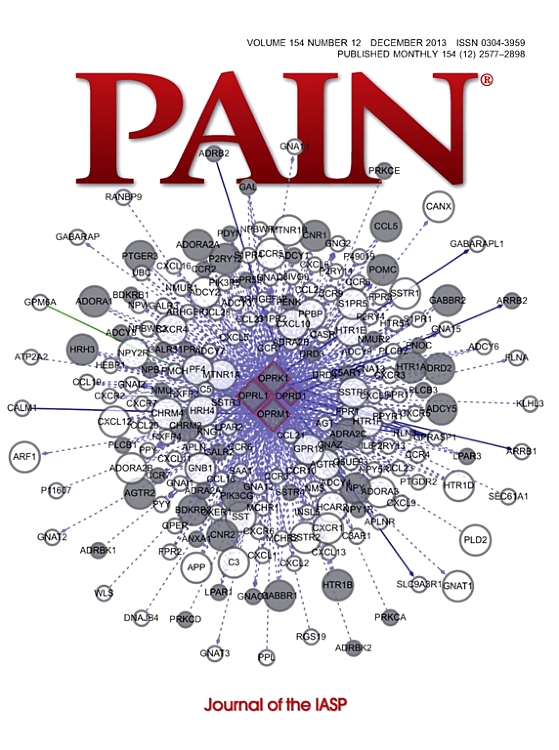Androgen receptors expressed in the primary sensory neurons regulate mechanical pain sensitivity.
IF 5.9
1区 医学
Q1 ANESTHESIOLOGY
引用次数: 0
Abstract
The expression of hormonal receptors in pain-processing regions complicates understanding the hormonal effects on pain mechanisms. This study investigates androgen receptor (AR) involvement in pain sensitivity and sex differences in pain perception. Mechanical pain thresholds were higher in normal male mice compared to gonadectomized (GDX) male and normal female mice, correlating with serum testosterone levels. In the dorsal root ganglia (DRG), AR was expressed in normal males but undetectable in GDX males and normal females. Androgen receptor overlapped with NeuN, a neuronal nuclei marker, indicating androgen signaling activation in sensory neurons. In male sensory neuron-selective AR conditional knockout (AR-cKO) mice, mechanical pain thresholds were significantly lower than in wild-type males, with the greatest AR depletion in calcitonin gene-related peptide (CGRP)+ neurons. Electrophysiological analyses revealed increased excitability of spinal dorsal horn neurons in both GDX males and AR-cKO males. In female mice, administration of testosterone propionate or dihydrotestosterone significantly raised mechanical pain thresholds, accompanied by increased AR expression in the DRG. This effect was abolished in AR-cKO females, where AR depletion was most prominent in CGRP+ neurons, consistent with male findings. These results indicate that primary sensory neurons, particularly CGRP+ neurons, are critical targets of androgen in regulating mechanical pain sensitivity. Therefore, manipulating androgen signaling in sensory neurons may offer a promising approach to managing mechanical pain.在初级感觉神经元中表达的雄激素受体调节机械疼痛敏感性。
激素受体在疼痛处理区域的表达使理解激素对疼痛机制的影响变得复杂。本研究探讨了雄激素受体(AR)参与疼痛敏感性和疼痛感知的性别差异。正常雄性小鼠的机械痛阈值高于性腺去切(GDX)雄性和正常雌性小鼠,与血清睾酮水平相关。在背根神经节(DRG)中,AR在正常男性中表达,而在GDX男性和正常女性中未检测到。雄激素受体与神经元核标记物NeuN重叠,提示感觉神经元雄激素信号激活。在雄性感觉神经元选择性AR条件敲除(AR- cko)小鼠中,机械痛阈值显著低于野生型雄性,降钙素基因相关肽(CGRP)+神经元的AR损耗最大。电生理分析显示,GDX雄性和AR-cKO雄性脊髓背角神经元的兴奋性增加。在雌性小鼠中,给药丙酸睾酮或二氢睾酮显著提高机械痛阈值,并伴有DRG中AR表达增加。这种效应在AR- cko女性中被消除,其中AR耗竭在CGRP+神经元中最为突出,与男性的研究结果一致。这些结果表明,初级感觉神经元,特别是CGRP+神经元,是雄激素调节机械疼痛敏感性的关键靶点。因此,控制感觉神经元中的雄激素信号可能为控制机械性疼痛提供了一种有希望的方法。
本文章由计算机程序翻译,如有差异,请以英文原文为准。
求助全文
约1分钟内获得全文
求助全文
来源期刊

PAIN®
医学-临床神经学
CiteScore
12.50
自引率
8.10%
发文量
242
审稿时长
9 months
期刊介绍:
PAIN® is the official publication of the International Association for the Study of Pain and publishes original research on the nature,mechanisms and treatment of pain.PAIN® provides a forum for the dissemination of research in the basic and clinical sciences of multidisciplinary interest.
 求助内容:
求助内容: 应助结果提醒方式:
应助结果提醒方式:


